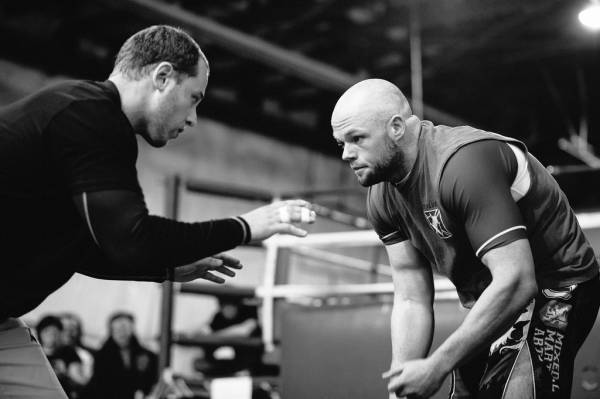The term strength and conditioning gets thrown around a lot by coaches and athletes. But what does strength and conditioning mean and what is its purpose? To me, a strength and conditioning program must contain the following elements:
- It must balance asymmetries. According to Gray Cook having an asymmetry increases your risk of injury.
- A strength and conditioning program must improve strength.
- It must contain some mobility work.
- It must include specific conditioning exercises based on the athlete’s sport. For the non-athlete, a program should include general conditioning exercises such as sled work.
A strength and conditioning program does not replace sport-specific skill work or training time. If you look at an athlete’s weekly training, sixty to eighty percent of training time should be dedicated to his or her sport. The mistake happens in thinking strength training is going to make you better at Brazilian jiu jitsu, wrestling or any other sport. Strength training will make you stronger. You must then take that strength and carry it over to your sport.
Common Mistakes in Strength and Conditioning Programs
Often you don’t realize something is missing from your training program until it’s too late. You get injured or burnt out. Everyone makes mistakes in sport and in life. The same is true with training programs. Some of the greatest strength coaches around talk about the mistakes they made in program design when they were starting out. Having the privilege of being around a large number of athletes, I have seen some common mistakes in their previous training programs.
Mistake #1: A Focus on Strengths
Most programs focus on an athlete’s strong points, but everyone has something to improve. A client or athlete could have a strong bench press, but a weak squat. In that example, a good program would maintain or slightly improve the bench, but focus on bringing up the squat. Maybe the athlete has a weak posterior chain that is keeping his or her squat numbers down. Dan John said it best, “Compete with your strengths. Practice your weaknesses.”
Mistake #2: Too Much Volume and Intensity
Some training programs require volume and intensity levels that are too high. If the only thing you do is work out and you do not play a sport, then I can understand some of the high volume and intensity work. I don’t think that sort of workload is a good idea to do all the time, but doing it during for a specified period is okay. If you do play a sport, then my opinion changes. Your strength and conditioning program should not leave you fatigued to the point that your performance in practice suffers.
Mistake #3: A Lack of Corrective Exercise
Almost every program I see is missing corrective exercise. Foam rolling is not enough. The amount of damage an athlete puts on his or her body requires more than foam rolling. You need to add in corrective exercise and mobility work to make a program complete.
What Brazilian Jiu Jitsu Athletes Need
 Brazilian jiu jitsu by itself is a strenuous workout. A BJJ strength and conditioning program should balance asymmetries, include some corrective exercise and mobility work, improve the athlete’s strength-to-weight ratio, and include specific conditioning at the right times. It is common for a BJJ athlete to always pass guard to the same side or always triangle with the same leg on top. That repetitive practice can lead to asymmetries. Removing asymmetries is one of the best things you can do for injury prevention. A BJJ athlete also needs a high strength-to-weight ratio. If a competitor competes at middleweight and can squat 300lbs, then he or she is going to be much stronger than a heavyweight that does the same weight. Finally, add in specific conditioning exercises that simulate a match. The goal is to mimic the fatigue an athlete faces during a competition. This does not need to be done all the time. Six to eight weeks before a tournament is enough. The majority of conditioning time should simply be spent rolling.
Brazilian jiu jitsu by itself is a strenuous workout. A BJJ strength and conditioning program should balance asymmetries, include some corrective exercise and mobility work, improve the athlete’s strength-to-weight ratio, and include specific conditioning at the right times. It is common for a BJJ athlete to always pass guard to the same side or always triangle with the same leg on top. That repetitive practice can lead to asymmetries. Removing asymmetries is one of the best things you can do for injury prevention. A BJJ athlete also needs a high strength-to-weight ratio. If a competitor competes at middleweight and can squat 300lbs, then he or she is going to be much stronger than a heavyweight that does the same weight. Finally, add in specific conditioning exercises that simulate a match. The goal is to mimic the fatigue an athlete faces during a competition. This does not need to be done all the time. Six to eight weeks before a tournament is enough. The majority of conditioning time should simply be spent rolling.
I tell everyone the best way to get better at Brazilian jiu jitsu is to actually do Brazilian jiu jitsu. The best way to keep doing Brazilian jiu jitsu is to make sure you have a good strength and conditioning program that develops your weaknesses, balances any asymmetries, and includes corrective exercise.
Photos provided by David Brown Photography.






